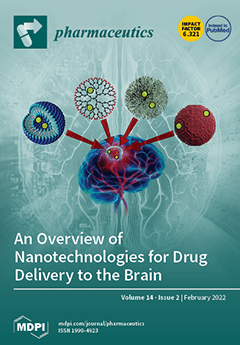A multicenter-observational study was performed to assess the effectiveness of rac-methadone, levomethadone, and buprenorphine in opioid-dependent patients in polytherapy in Southern Italy. The primary endpoint was the reduction of urinary positivity to the substances and the maintaining doses. Patients (N = 266, age
[...] Read more.
A multicenter-observational study was performed to assess the effectiveness of rac-methadone, levomethadone, and buprenorphine in opioid-dependent patients in polytherapy in Southern Italy. The primary endpoint was the reduction of urinary positivity to the substances and the maintaining doses. Patients (N = 266, age = 44.80 ± 5.65, male = 79.70%, female = 20.30%) have been recruited. At recruitment, 75% of them were on treatment with rac-methadone, levomethadone, and buprenorphine/naloxone. The patients were grouped into three clusters. The levomethadone patients of Cluster A (N patients = 211), after 180 days, showed stability in urinary methadone positivity, with a marked decrease in heroin −53 ± 4%, cannabinol’s −48 ± 2%, and cocaine −37 ± 6% positivity, with no differences between treatments. A lower QTcF value of 426 ± 8.4 ms was recorded in the levomethadone patients (delta = −19 ms) vs. rac-methadone, at significantly lower doses of levomethadone (−34%, −50.2% in males) (
p < 0.05). The Cluster B data were collected from 37 patients, with a high prevalence of comorbidity infections (HIV/HCV/HPV), monitored for 21 months during COVID-19. High doses of levomethadone (58.33 ± 31.58 mg/day) were needed to stabilize those that were negative for opioids and cannabinoids, in contrast to the rac-methadone and buprenorphine/naloxone patients that showed positive toxicology. Eighteen patients of the Cluster C in double diagnosis (major depressive 38.90%, bipolar 27.78%, and schizophrenia 16.67%) were stabilized with high doses of racemate 97.5 ± 8 mg/day, 51.8 ± 5 mg/day of levomethadone (−46.8% vs. rac-methadone; −71% in men), and 2.5 ± 1 mg/day of buprenorphine/naloxone. Three patients in remission were treated with tapering doses of levomethadone. Significantly reduced QTcF values were recorded with levomethadone (delta −32 ms vs. rac-methadone) in the bipolar patients, as well as the schizophrenia patients in remission (delta −45.19 ms vs. rac-methadone). Our patients were safely stabilized. Levomethadone, compared to the racemate, contributes to reducing the illicit use, especially of opioids and cannabinoids at significantly lower doses with cardiovascular safety, which, in bipolar patients, is clinically significant.
Full article






